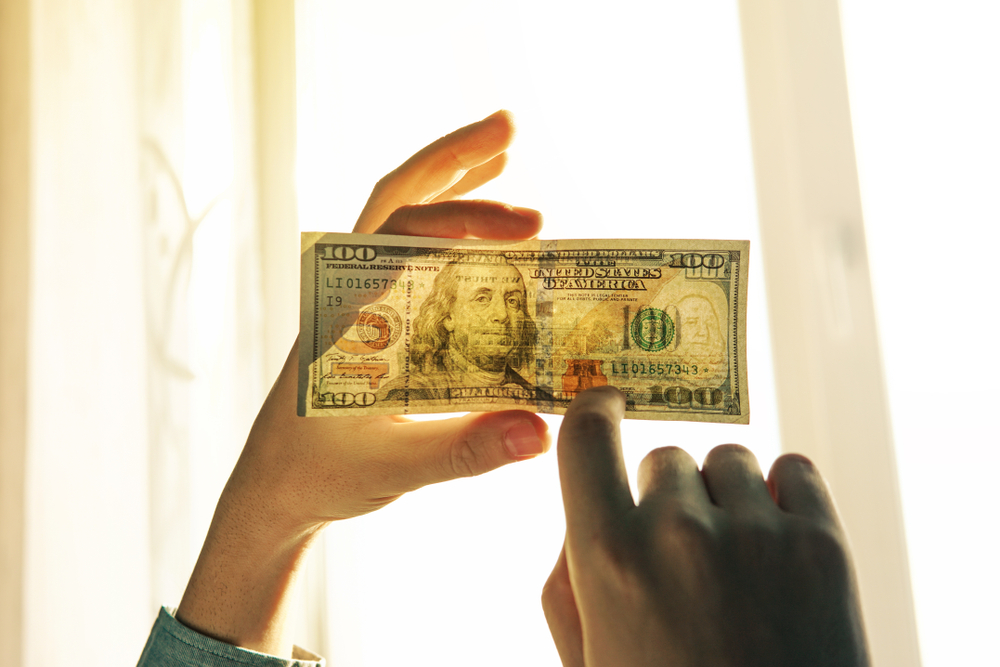Have you held a new $20 bill up to the light? Yes, you’re seeing a watermark, and a very fine one at that! Many of the pieces of paper that pass through your hands every day contain watermarks. You won’t find them in computer printer paper or fax machine paper, but personal and corporate letterheads often have them.
Big companies like Merrill Lynch, IBM, Coca Cola, and even Walt Disney, to name a few, have their corporate logos watermarked in their paper. Ever wonder how they do that? Well, the digital label printing experts at United Label are here to tell you!
The history of watermark technology
Watermarks in paper have been used for centuries as security devices. One way of telling if the King (or other nobleman) was the real sender of a letter was to check the watermark in the paper AND the image pressed into the sealing wax. If one or the other didn’t match — beware the fake! There was also a strong vanity component to watermarks.
Only the wealthy could afford such paper. In modern society, watermarks play the same role as they did centuries ago.
Today we have “chemical watermarking” as well as traditional watermarking. In many people’s opinion, only the “true” or traditional manner of applying watermarks offers the solid security clients are seeking. As you read this description of the process, you’ll see just how hard it would be to counterfeit a true watermark.
Watermarks are delivered to paper pulp while the slurry is still 97% water. The marks are soldered or pressed into Dandy Rolls (open wireframe rolls) which are near the end of the paper making process. As soon as the watermark hits the pulp, all of the water is sucked out of the pulp and the paper goes through to a dryer and onto a huge roll. Sometimes the paper will go on to be coated for specialty uses, but the watermark is now in the paper permanently.
Types of Watermarks
There are two basic types of watermarks: the Raised mark and the Shaded mark. However, keep in mind that a raised and shaded combination is also possible, as is a Multi-Tonal shaded mark.
The Raised Watermark
The Raised watermark shows up lighter than the paper itself, and usually has a strong linear component. The design is literally raised about 1/16″ or so above the surface of the dandy roll by soldering the wire-formed design to the roll’s wire mesh. When this raised design hits the paper pulp the pulp is pushed aside, or repelled. The thinner density of the pulp appears lighter than the rest of the paper. These marks are frequently shields, mottoes, names, line drawings and product specific text. Better quality writing and typing paper often have raised marks, and you’ll find good examples in Eaton’s and Crane & Co. papers.
The Shaded Watermark
Shaded watermarks show darker than the paper itself, and are usually used for designs with larger solid areas. Shaded marks are actually pressed into wire mesh which covers the dandy roll. When the shaded mark hits the paper pulp, the pulp is collected into the depression and creates a mark that is darker than the surrounding paper. You’ll usually find marks like these in the paper of companies such as IBM and Merrill Lynch, but not on your stationer’s shelves.
The Combination: Raised and Shaded Watermark
The Raised and Shaded mark combination is just that . . . some areas are pressed into the wire mesh, while others are raised. This gives the mark a nice two-tone appearance. There is also a Multi-Tonal mark which is similar to the combination mark, but has no soldered raised areas, only different levels of pressed wire mesh.
Watermark Security
With today’s modern equipment multi-tonal marks are becoming more popular and are even harder to counterfeit. This type of mark requires either hand-carving/routing the design into a metal plate to different levels for a pressing into the wire mesh of the dandy roll, or using a CNC milling machine. Pulp is collected at different densities, creating the different tones required by the design. Either method can produce marks of amazing complexity and beauty. The watermark on your $20 bill is made using this type of mark.
The Use of Watermarks in Business
Once the mark is in the paper nothing can remove it. It is truly a part of the paper, not something applied later with chemicals or ink. Counterfeiting a true watermark would require such specialized equipment (not to mention a paper making machine the size of a small building) that it’s hard to imagine anyone even attempting it. Forensic scientists even use these marks to date paper and authenticate letters and documents for legal proceedings. So, if you’re concerned with making sure your company’s gift certificates haven’t been counterfeited, true watermarking is a great idea. If you want your company’s correspondence and other paper items to have some real class, watermark your stationary with the company logo — it will create a wonderful impression!
Contact United Label For All of Your Label Needs
Watermarks, packaging, logos, design… it all works together in developing a great brand and product-shopping experience for the end user. But your customer also needs to see a great label, and that’s where United Label can help you out. Contact us today for a free quote!
